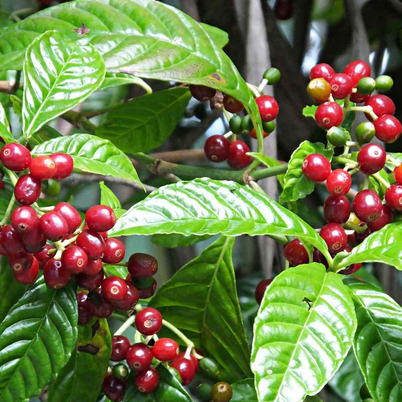|
Name: Caffeine
Type: Stimulant
AKA: 1, 3, 7-Trimethylxanthine, coffee, tea, energy drinks

|
|
II. Natural Derivative

|
|
III. Chemical Profile (IUPAC name)

|
|
IV. History
Caffeine, a stimulant found in coffee and tea, has been consumed for thousands of years. It plays a significant role in global culture and commerce, impacting social practices and health.

|
|
V. Legal Information
Caffeine is legally available worldwide and widely consumed in beverages and dietary supplements. It is not a controlled substance but is regulated for safe use by agencies like the FDA. Caffeine content in products is monitored to prevent adverse health effects. Trends indicate continued acceptance and widespread use, with ongoing research into its health impacts and benefits.
Not Scheduled
Caffeine is not classified under the Controlled Substances Act but is regulated by the Food and Drug Administration (FDA) as a food ingredient and dietary supplement.
Key US Federal Policies:
The FDA regulates caffeine as a food additive and dietary supplement. It sets limits on caffeine content in certain products, such as soft drinks (71 mg per 12 fl oz). The agency also monitors and regulates the labeling and marketing of caffeine-containing products to ensure consumer safety.
|
|
VI. Physical Effects
Caffeine is a central nervous system stimulant commonly found in coffee, tea, and energy drinks. It increases alertness and reduces fatigue. Short-term use is generally safe for most people and can improve cognitive function and physical performance. Long-term use is also generally safe but excessive consumption can lead to insomnia, jitteriness, and cardiovascular issues. Safe use involves moderate consumption. Recent research supports its cognitive and physical performance benefits while highlighting potential risks of overuse.  |
|
VII. Psychological Effects
Caffeine, a stimulant, affects adenosine receptors, leading to increased alertness, mood elevation, and enhanced cognitive performance. Immediate effects include improved mood and mental alertness, lasting 3-5 hours. Long-term use may result in tolerance and dependence, with potential psychological impacts such as anxiety and sleep disturbances. Research emphasizes its impact on cognitive function and potential for dependence with excessive use.
 |
|
VIII. Culture
Caffeine has a long history and cultural significance, dating back to ancient civilizations like the Chinese and Arabs, where it was consumed in tea and coffee. It is mentioned in historical texts, including early medical manuscripts. In modern culture, caffeine is ubiquitous in beverages and has significant roles in productivity and social practices. Proponents highlight its cognitive benefits, while opponents cite issues like dependence and health risks. It is used both recreationally and medicinally.
 |
